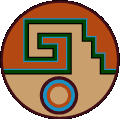Speaker
Description
Declarative Analysis Languages (DALs) are a paradigm for high-energy physics analysis that separates the desired results from the implementation details. DALs enable physicists to use the same software to work with different experiment's data formats, without worrying about the low-level details or the software infrastructure available. DALs have gained popularity since the HEP Analysis Ecosystem Retreat in Amsterdam in 2017, where they were first seriously discussed as in a community setting. Since then, several languages and tools have adopted features from DALs, such as ADL, awkward, RDF, and func_adl. These languages and tools vary in how much they adhere to the declarative principle, and how they interact with imperative code. In this presentation, we will review this convergence and some of the common features and challenges of DALs, using examples from various languages and tools. We will also discuss recent developments allowing different languages access to custom experiment data formats. We will conclude by reflecting on the future directions of DALs and imperative analysis tools, and how they can improve their convergence, usefulness, and efficiency.
Significance
Declarative Languages have captured the imagination of many physicists. As they have started to gain some maturity the imperative tools and languages have started to adopt some of their features. This talk will talk about some recent developments and work demonstrating this and predict (or push) for a future for more of this.
| Experiment context, if any | IRIS-HEP |
|---|
